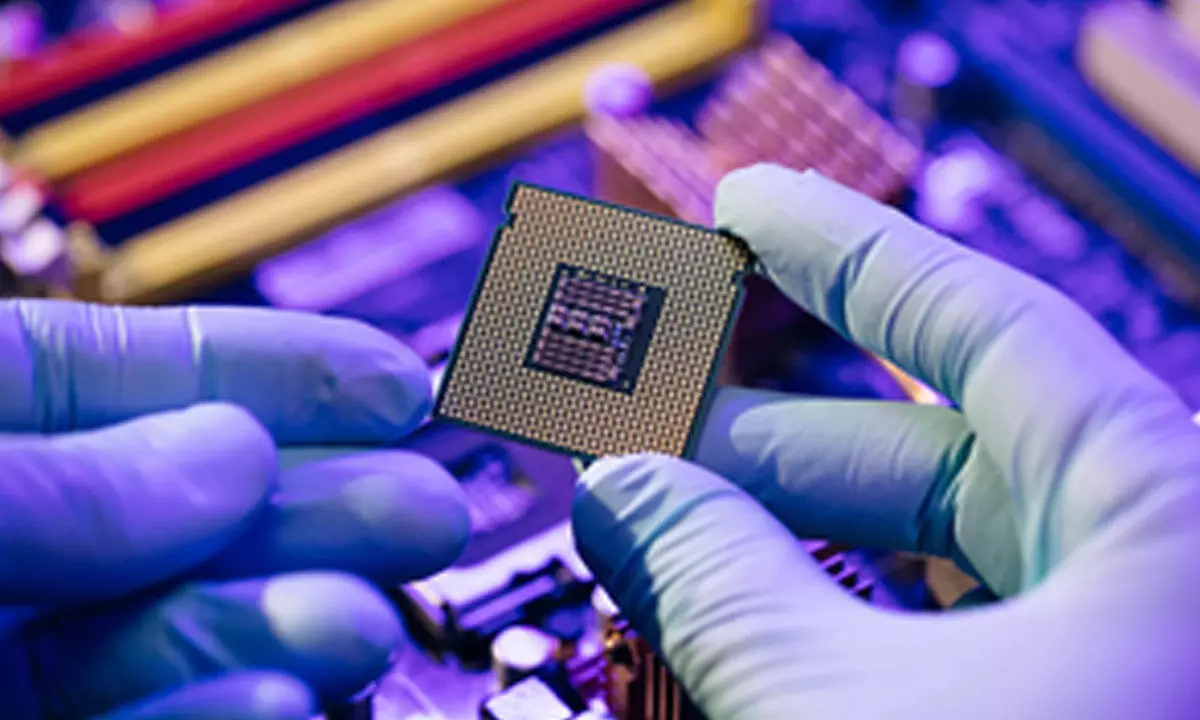Live
- Pooja Chopra recalls water balloon fights and fond Holi memories with family
- How to care for your skin pre and post Holi
- Thriving in tech world: How women can take control of their careers
- STEM hiring to rise by 15-20 pc by 2027: Report
- UK Regulator Accuses Apple and Google of Stifling Mobile Browser Competition
- Tamil Nadu CM Stalin Invites Telangana CM Revanth Reddy for Meeting on Delimitation Impact
- Essential career tips for freshers
- Tips to avoid unnecessary mistakes while studying abroad
- Holi Festival: Liquor Outlets to Remain Closed for Holi in Hyderabad
- iQoo launches Neo 10R model
Indian scientists showcase rare electron phenomenon to expand scope of chips

In a significant discovery, researchers at Bengaluru’s Jawaharlal Nehru Centre for Advanced Scientific Research (JNCASR), an autonomous institute of Department of Science and Technology (DST), have demonstrated a rare electron localisation phenomenon which can expand scope of semiconductors, the Ministry of Science and Technology said on Thursday.
New Delhi: In a significant discovery, researchers at Bengaluru’s Jawaharlal Nehru Centre for Advanced Scientific Research (JNCASR), an autonomous institute of Department of Science and Technology (DST), have demonstrated a rare electron localisation phenomenon which can expand scope of semiconductors, the Ministry of Science and Technology said on Thursday.
The phenomenon can increase the options for material choices and can be used either to improve the existing performances of semiconductors or expand their applications in areas like lasers, optical modulators, and photoconductors, said the Ministry of Science and Technology.
Spearheaded by Associate Professor Bivas Saha, the team unveiled how single-crystalline, highly compensated semiconductors undergo a remarkable metal-insulator transition with single crystalline scandium nitride as an example.
Apart from JNCASR, researchers from the University of Sydney, Australia, and Deutsches Elektronen-Synchrotron, Germany, also participated in this work.
“We show that one can achieve a phenomenon that is very similar to the Anderson transition, albeit in a single-crystalline material. These findings are poised to transform our understanding of electron localization in materials.” said Saha.
This transition, published in the journal Physical Review B, is accompanied by an astonishing nine orders of magnitude change in resistivity, offering fresh insights into the electron localization behaviour in these materials.
The team used oxygen and magnesium as random dopants to demonstrate a “quasi-classical Anderson transition” that creates fluctuation of potential (electrical potential), leading to bubbles of electrons inside a dielectric matrix that bring about a band structural change in the parent material.
This leads to what is known as the percolative metal-insulator transition -- the structure remains the same but electronically, there is a transition.
Anderson localisation is a general wave phenomenon that applies to the transport of electromagnetic waves, acoustic waves, quantum waves, spin waves, etc.
The potential fluctuation resulting from the random distribution of the dopants increases the resistivity of the semiconductor by localizing the carriers. The electron transport in such localized systems occurs through a percolation process, which is not very common in semiconductors. Hence the physics explaining the electrical transport and the properties like mobility, photoconductivity, and thermopower are different in such materials.
Dr Dheemahi Rao, the lead author of the paper, said that such an electronic transition in single-crystalline and epitaxial semiconductors could open pathways for their utilization in various applications, including lasers, optical modulators, photoconductors, spintronic devices, and photorefractive dynamic holographic media.”
Potential fluctuations can be a novel tool to alter semiconducting properties in materials and may lead to more efficient semiconductors in many branches of studies.

© 2025 Hyderabad Media House Limited/The Hans India. All rights reserved. Powered by hocalwire.com






